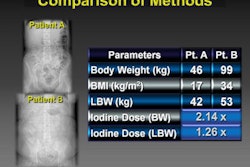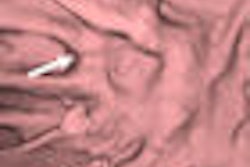Two new clinical studies used CT to determine that European guidelines for setting the depth of chest compression when resuscitating children may be more accurate than those followed in the U.S. The U.S. guidelines actually could lead to injury in children, researchers say.
Guidelines from the American Heart Association (AHA) for resuscitating infants and children are presumed to be accurate and authoritative. But researchers from Taiwan and the U.S. used CT scans to assess the chest depth of children, and they independently reached the conclusion that the guidelines need to be more specifically defined. Their findings are presented in two articles published in the July issue of Pediatrics (2009, Vol. 124:1, pp. e69-e74 and pp. 49-55).
The AHA guidelines state that a target compression depth of one-third to one-half of anteroposterior (AP) chest depth be used. But emergency physicians from Dartmouth-Hitchcock Medical Center in Lebanon, NH, recommend that this be modified to one-third of external chest depth.
Their chest depth recommendation is consistent with the guidelines of the European Resuscitation Council (ERC) located in Brussels, Belgium, and the International Liaison Committee on Resuscitation, an organization of seven professional associations.
A constant chest compression depth target of 38 mm would be adequate to maintain a residual internal chest depth of at least 10 mm, according to Dr. Matthew Braga, a pediatric critical care physician at Dartmouth-Hitchcock Medical Center.
Dartmouth-Hitchcock researchers reconstructed and analyzed 280 chest CT scans representing 14 age categories of children from birth to 8 years. Twenty scans from each age category were evaluated.
Braga and colleagues determined that for 25% of children in the 3- to 12-month age group, a target depth of one-half AP chest compression would theoretically have no residual internal depth. This would leave no room for the intrathoracic structures -- including the heart and great vessels -- and while achieving this depth might be impossible in actual practice because of myocardium thickness, intrathoracic structures being compressed could be damaged.
One-half AP chest compression would also be potentially dangerous for 21% of children ages 1 to 3 years and 8% of children ages 3 to 8 years.
It's important to ensure that current goals for chest compression depths are safe and attainable because the guidelines are anticipated to be programmed into CPR feedback technologies being developed, according to the researchers.
In a smaller study, researchers from the National Taiwan University Hospital analyzed CT scans of 36 infants from birth to 1 year of age, and 38 children from 1 to 8 years of age.
They determined that there was no statistical difference in reaching accurate depths of chest compression at either the lower half of the sternum or the internipple line. For this reason, they recommended that the existing guidelines be simplified to provide a single directive, rather than two optional points of performing chest compression, which could cause confusion.
The current guidelines reflect unreasonable recommendations, because a compression depth for a child that is equal to or greater than that of an adult patient is not appropriate, according to lead author Dr. Pei-Chieh Kao, an emergency medical physician, and colleagues. They recommended that optimal compression depths for infants and children be based on anatomical realities and hemodynamic measurements.
Both groups suggested that additional research be conducted based on their findings.
By Cynthia E. Keen
AuntMinnie.com staff writer
July 24, 2009
Copyright © 2009 AuntMinnie.com




















